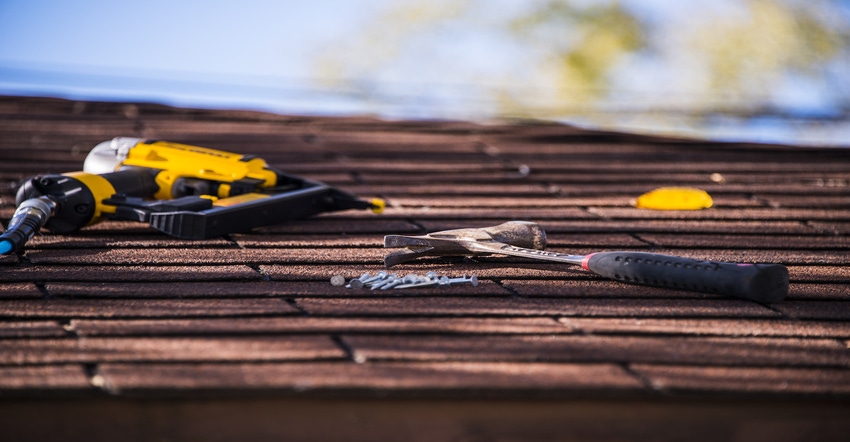Housing Affordability to Remain a Challenge in 2022: Webinar
During Buildxact's webinar entitled "2022 Housing Forecast and its Impact on your Business," National Association of Home Builders Chief Economist Robert Dietz covered a range of topics including construction costs, labor shortages and more.

Buildxact hosted a webinar entitled "2022 Housing Forecast and its Impact on your Business" featuring Robert Dietz, chief economist for the National Association of Home Builders (NAHB).
NAHB is a national trade association with about 100,000 members representing single-family builders, multifamily developers and remodelers and land developers as well, noted Dietz, who leads a team of 10 economists, half of whom he said hold a Ph.D.
"We follow the residential construction industry from a survey perspective and a housing policy perspective," Dietz said. "And then we do a fair amount of data analysis and forecasting."
During the webinar, Dietz explored some of the macro factors, some demographics and supply-side challenges that the industry has faced over the last 18 months before ending with NAHB forecasts.
"But in truth," he said, "there has been supply-side constraint for the last five or six years."
Dietz said the title of his presentation—"Housing affordability headwinds increase"—is going to be the challenge in 2022.
"It's worth noting, I'm a little more conservative when it comes to the forecast for the next year or two," he explained. ". . . I think our view is a little more negative than others."
COVID-19 impact
Dietz said that COVID-19 has dictated policy and the economy over the last two years.
"We do believe the vaccine combined with natural immunity are supporting economic growth," the economist noted. "It does look like the Delta wave has eased but of course, the wild card right now is the Omicron variant. I think it's it's kind of an outstanding question right now.
". . .[T]hat's certainly something to keep in mind. Not just for the economic outlook, but thinking about monetary policy and interest rates," he continued. "In terms of the macro environment, we think the economy will continue to grow over the next two years, but that growth rates are going to slow down and interest rates are going to move higher. And I think most economists, including myself, think that they are beginning to recognize that inflation was not a transitory challenge at least transitory meaning over the 12 month period, and they're beginning to accelerate their tightening of monetary policy and that means higher interest rates."
Supply chain
Deitz warned that supply chain issues aren't clearing up just yet.
"Of course, everyone in the industry understands that the building material system right now is a real challenge," he said. "We do think those supply chain obstacles are going to persist well into 2022—if not 2023."
NAHB forecasts continued growth in multifamily remodeling, as well as "a little bit of growth for single-family construction," though Dietz said, "it looks a little bit flat on our table, but it's about 25% higher than the production levels that we saw in 2019."
Housing affordability will likely continue to decline due to higher home prices, rising rents, increasing interest rates and additional rising inflation challenges, according to Dietz.
"It's worth keeping in mind just how bad from an economic perspective, that second quarter of 2020 was," the economist said.
Labor shortage
Dietz also discussed the ongoing labor shortage
"This is an incredible statistic but right now there are more than 11 million open jobs," he said. "You could literally take every person on unemployment, put them into a job, and there would still be open jobs in the United States right now. That's the consequence of diminishing immigration. And the fact that we've got a lot more workers on the sidelines. So filling these open jobs actually is a real key policy challenge. And it's got to be part of the story of fighting inflation.
"Before the COVID recession, we were at a 63% participation rate. That's the share of working-age adults who were either holding a job or looking for a job," he continued. "It fell down to 60%. There was a bit of a recovery during the second half of 2020. And right now it's about 62%. It doesn't sound like a big gap, but that one percentage point decline that's still essentially baked into the cake does represent at least 1 million workers who moved to the sidelines."
Inflation was another topic the economist covered.
"Now, housing inflation is about 1/3 of total inflation," he said. "I don't think anyone out there believes right now that rents are only increasing by 3%. So this is a lagging measure in terms of going forward future inflation measures, this is going to go up."
Additional outlook
He also covered mortages, bonds, construction costs, tariffs and more.
"The market has been a supply side constraint. And I've kind of referred to these limiting factors as the five L's, it's a lack of labor, a lack of land lots, lending to private builders. We've got issues with laws and regulatory burdens that make building more expensive and of course, over the last 18 months, lumber, and building materials have been a big impact.
"If you look at lumber prices, they were at $350 per 1000 board feet back in April 2020," he continued. ". . . [T]hen at the start of 2021, really went up to about $1,500 per 1000 board feet, all in adding $30,000 or more to a typical single family home and about $10,000 to a typical apartment."
Click here to watch the webinar.
About the Author(s)
You May Also Like




